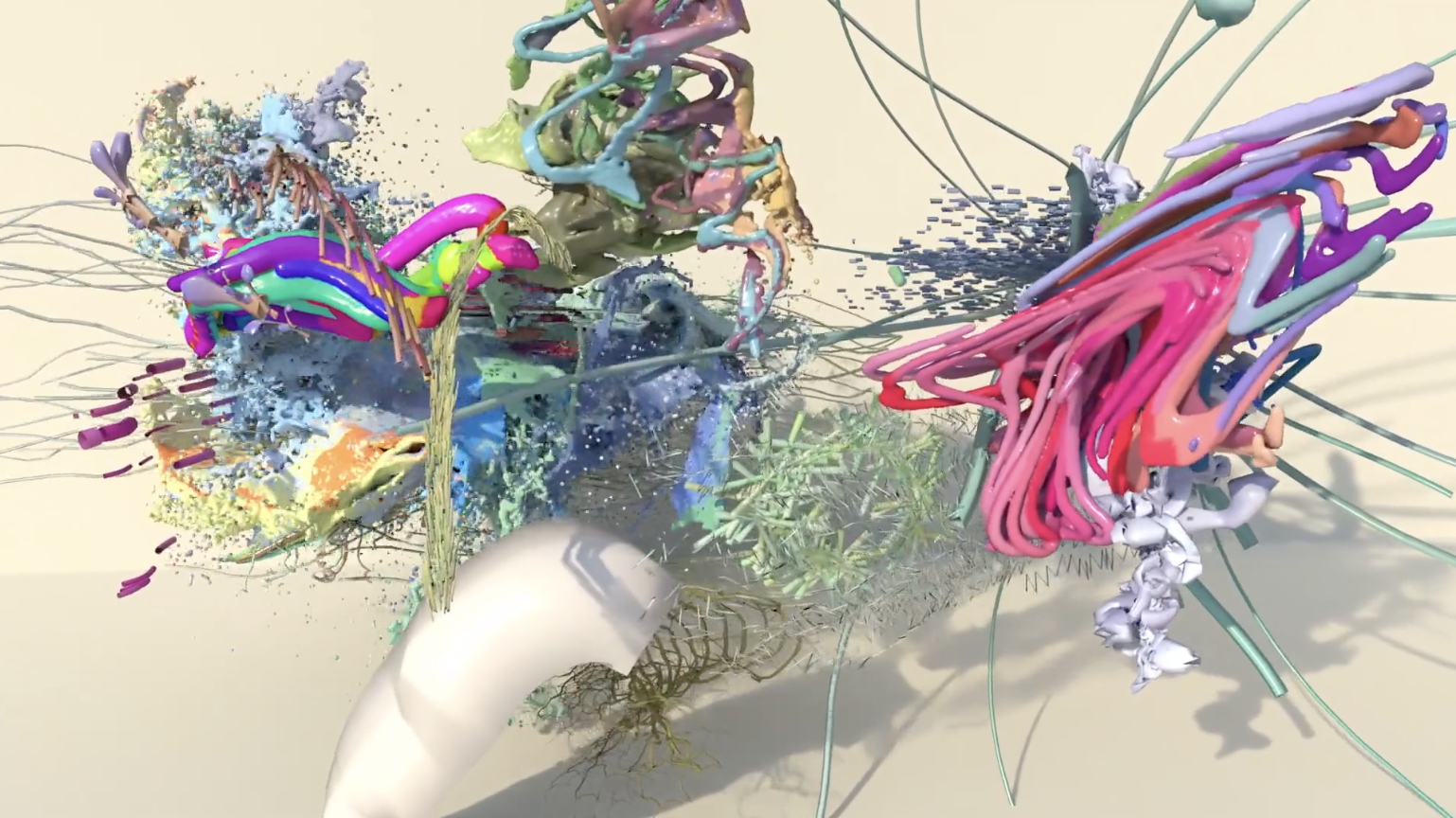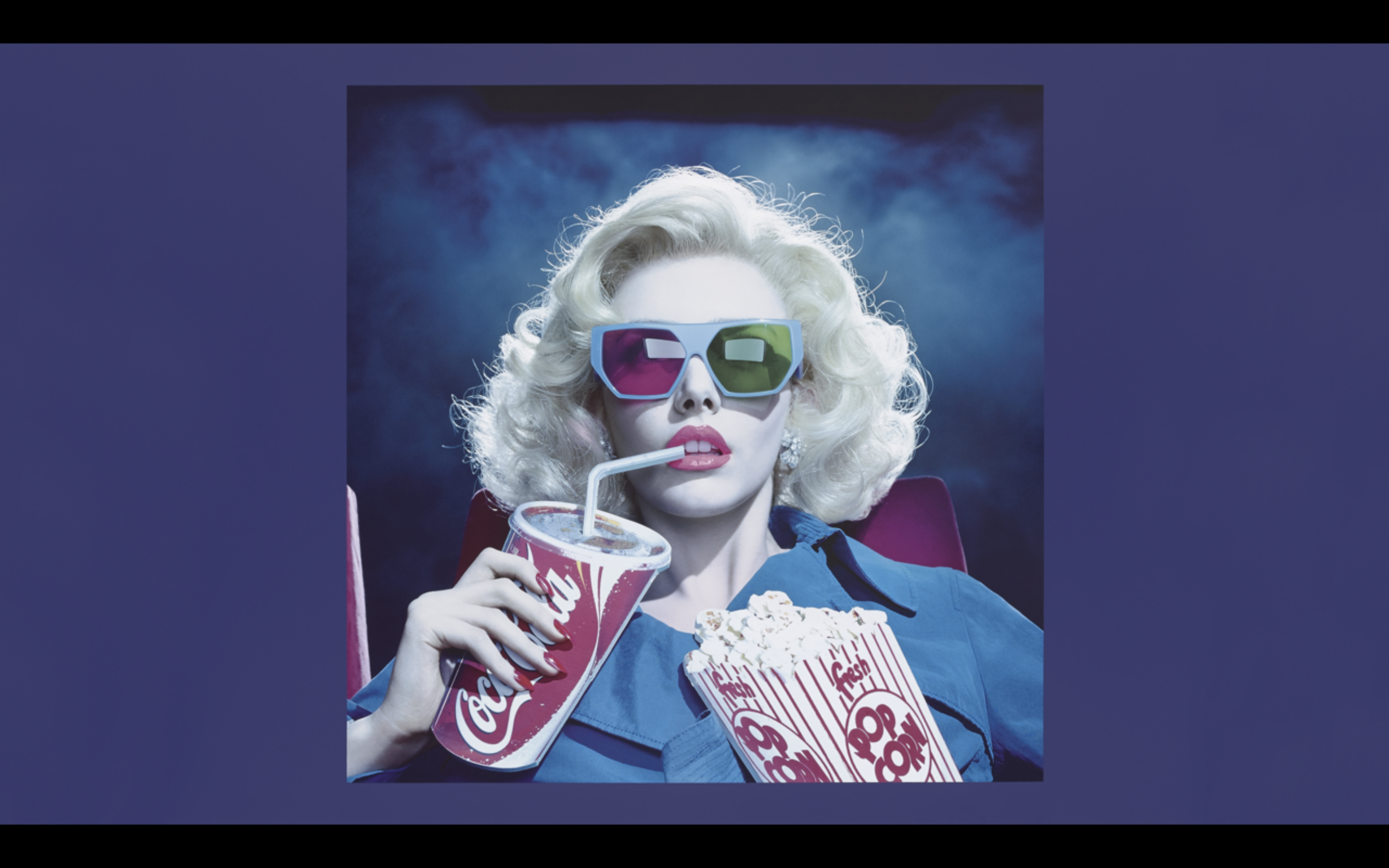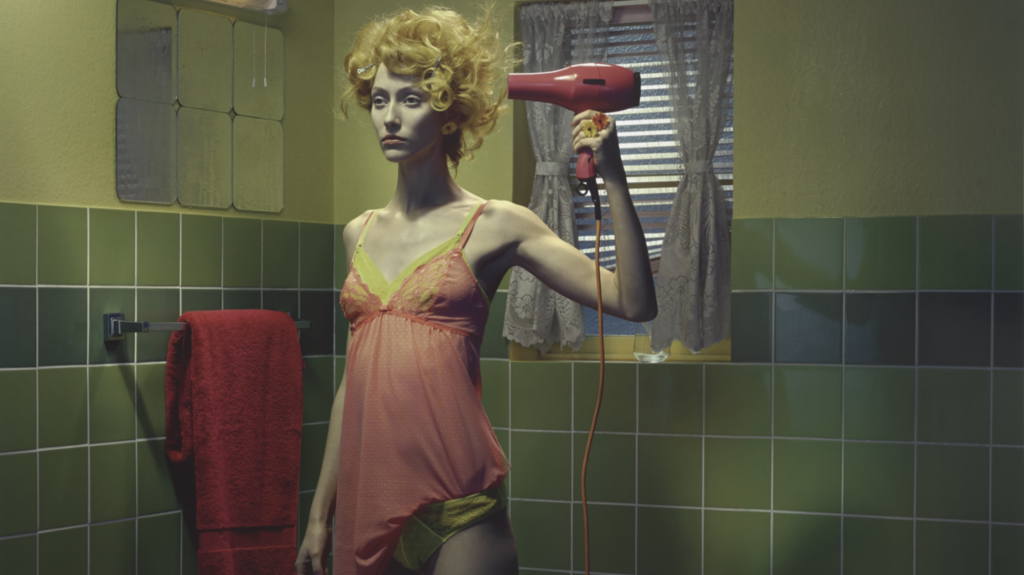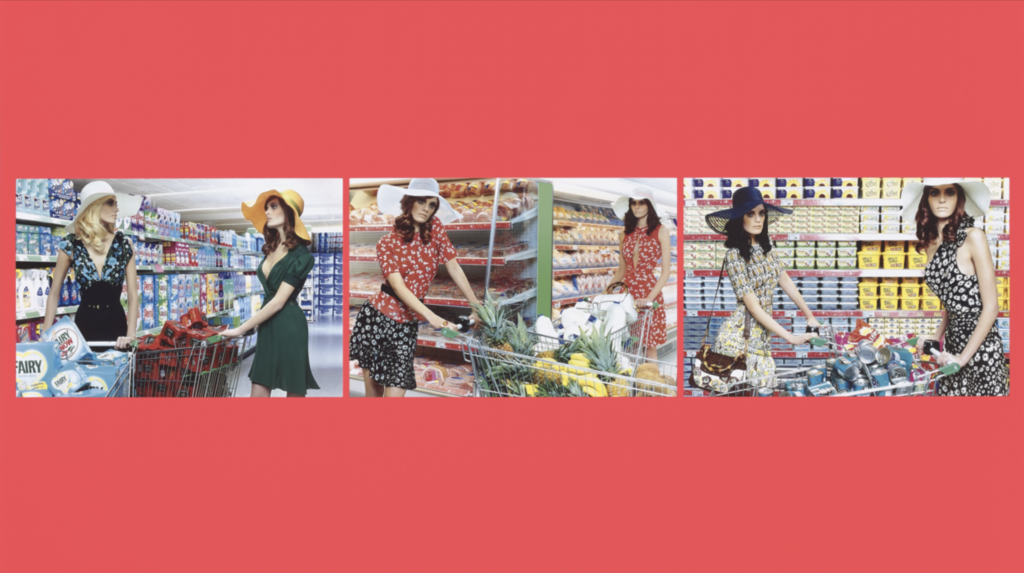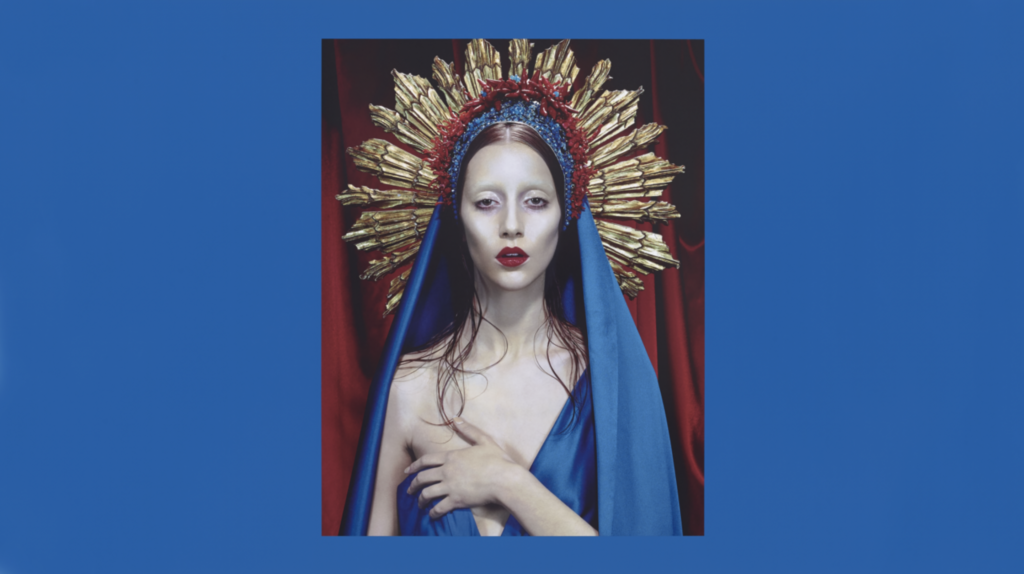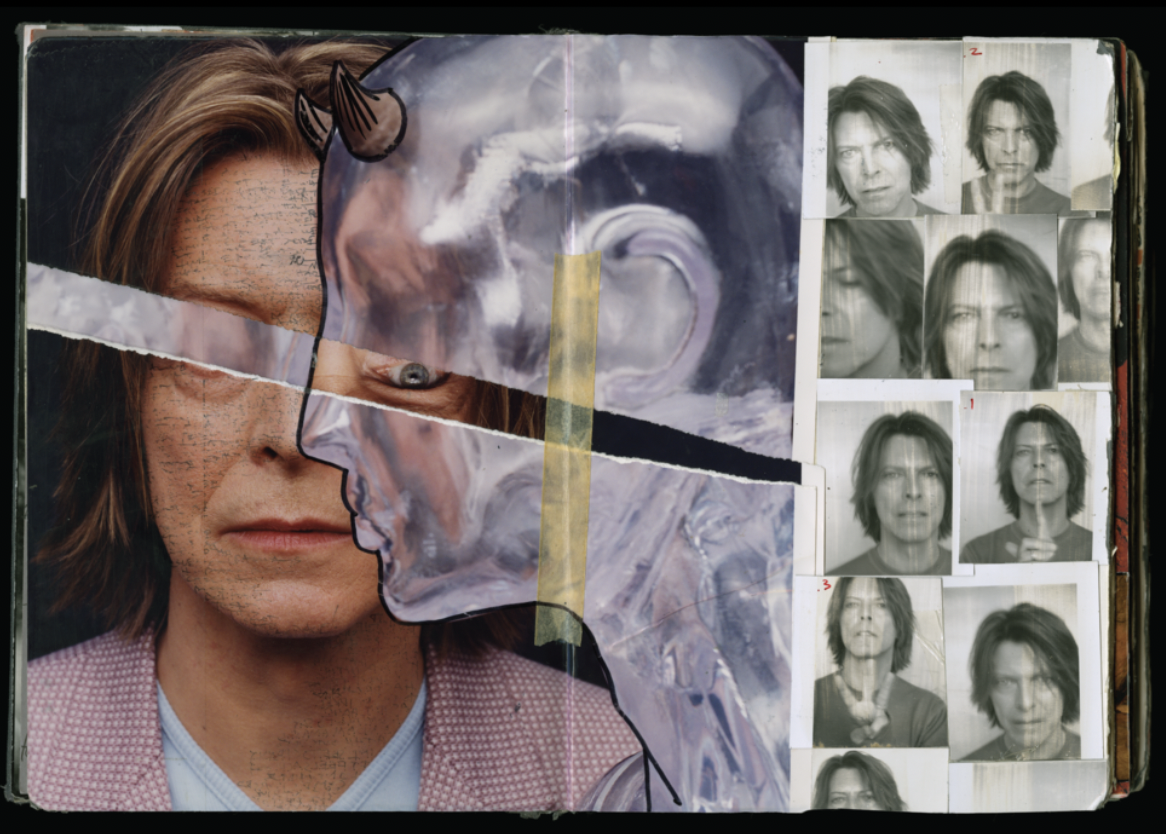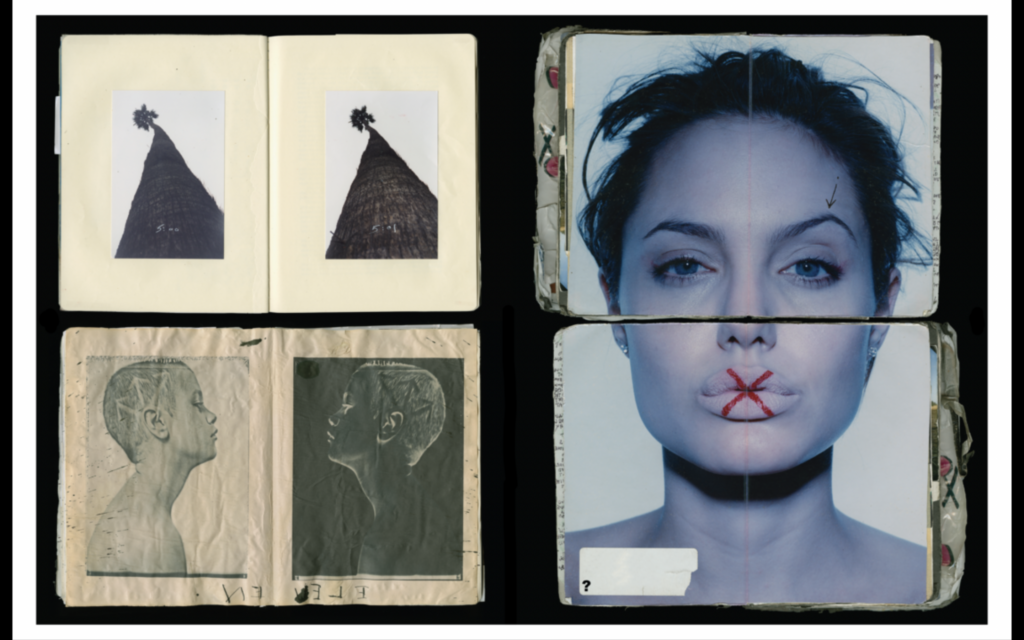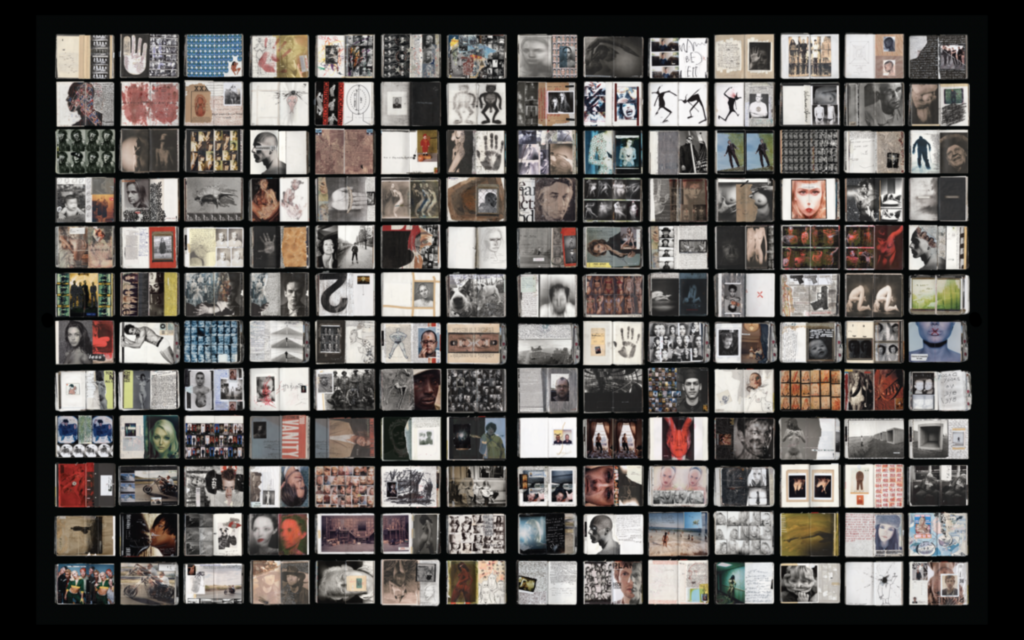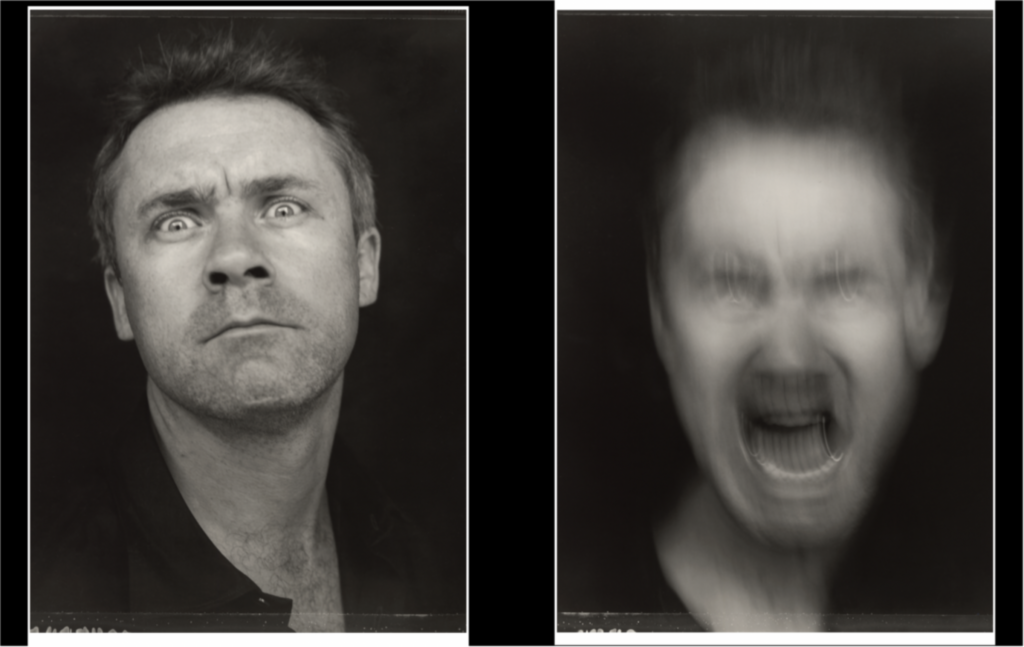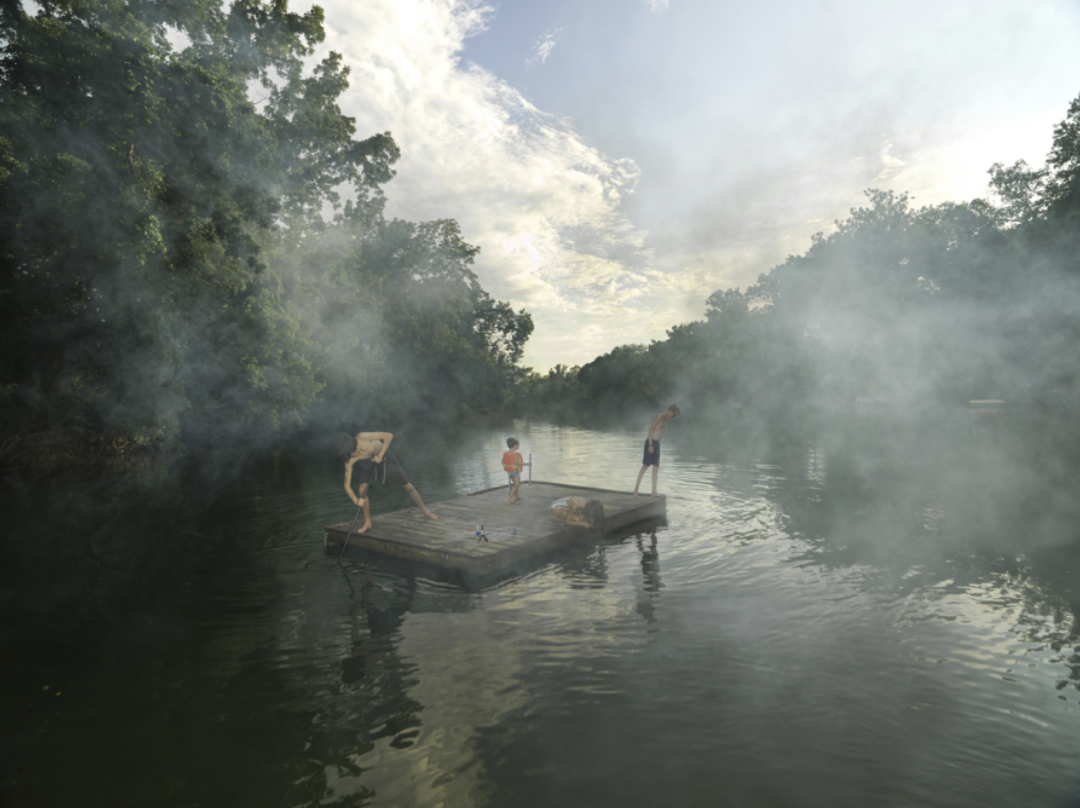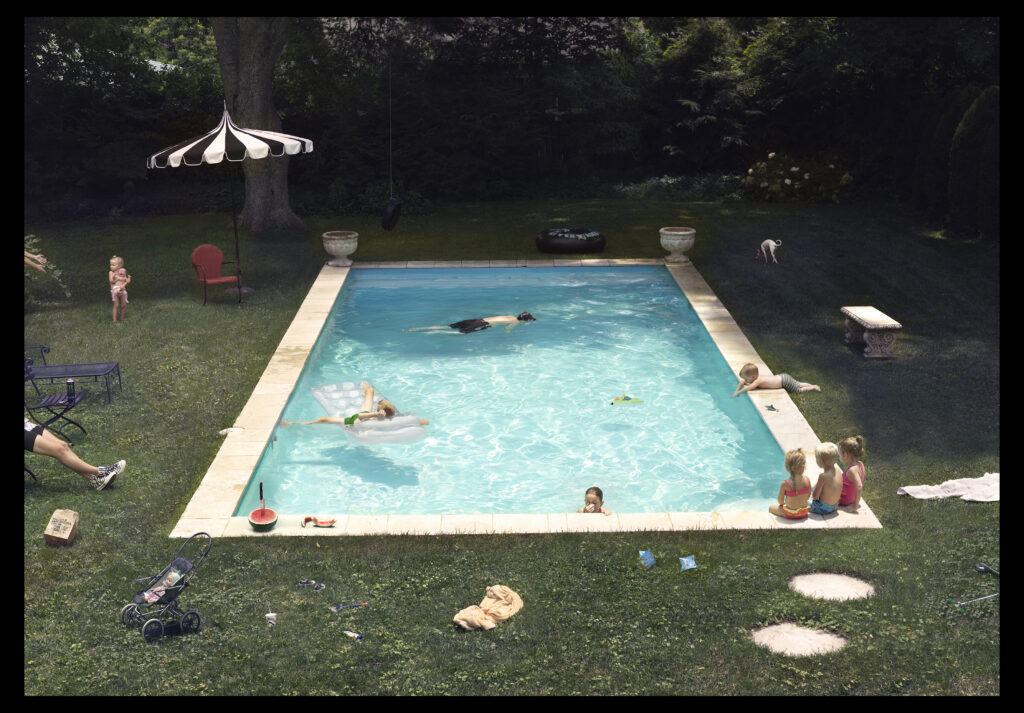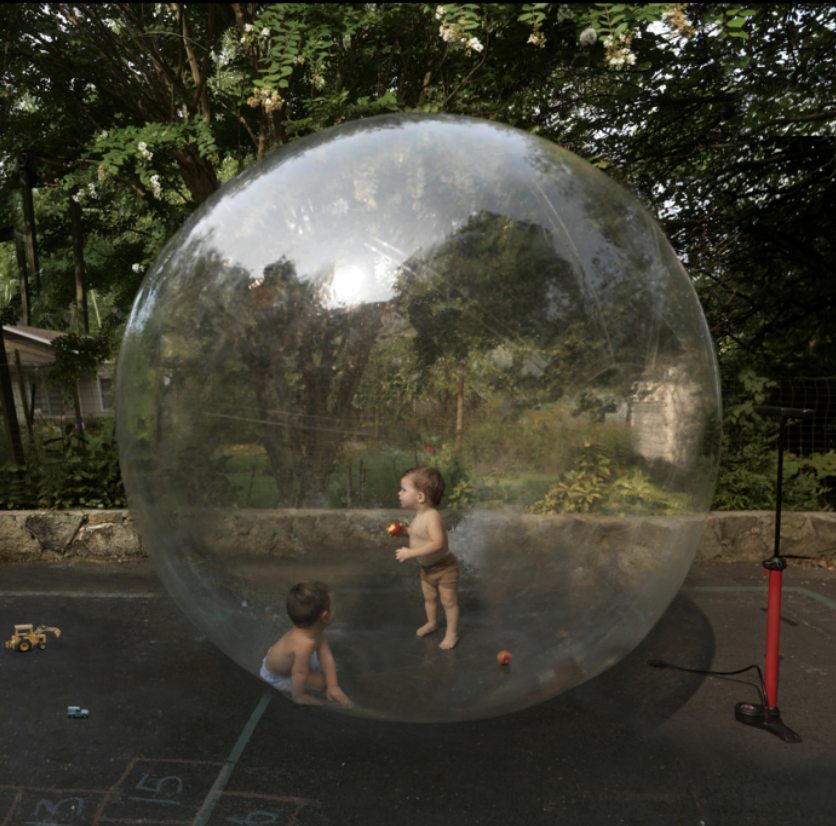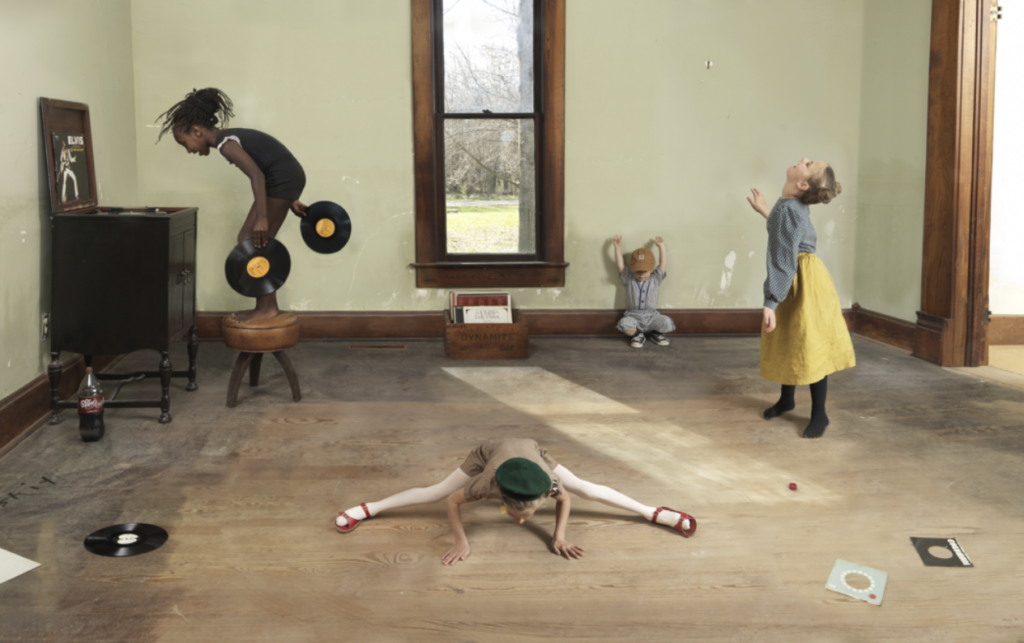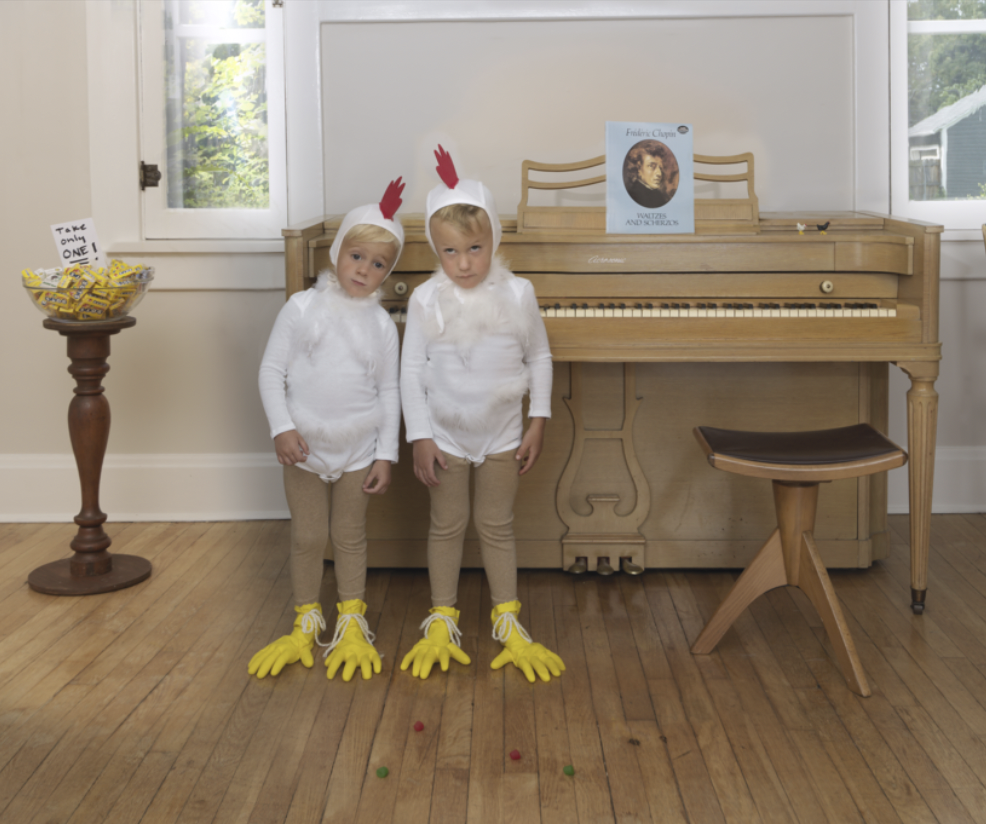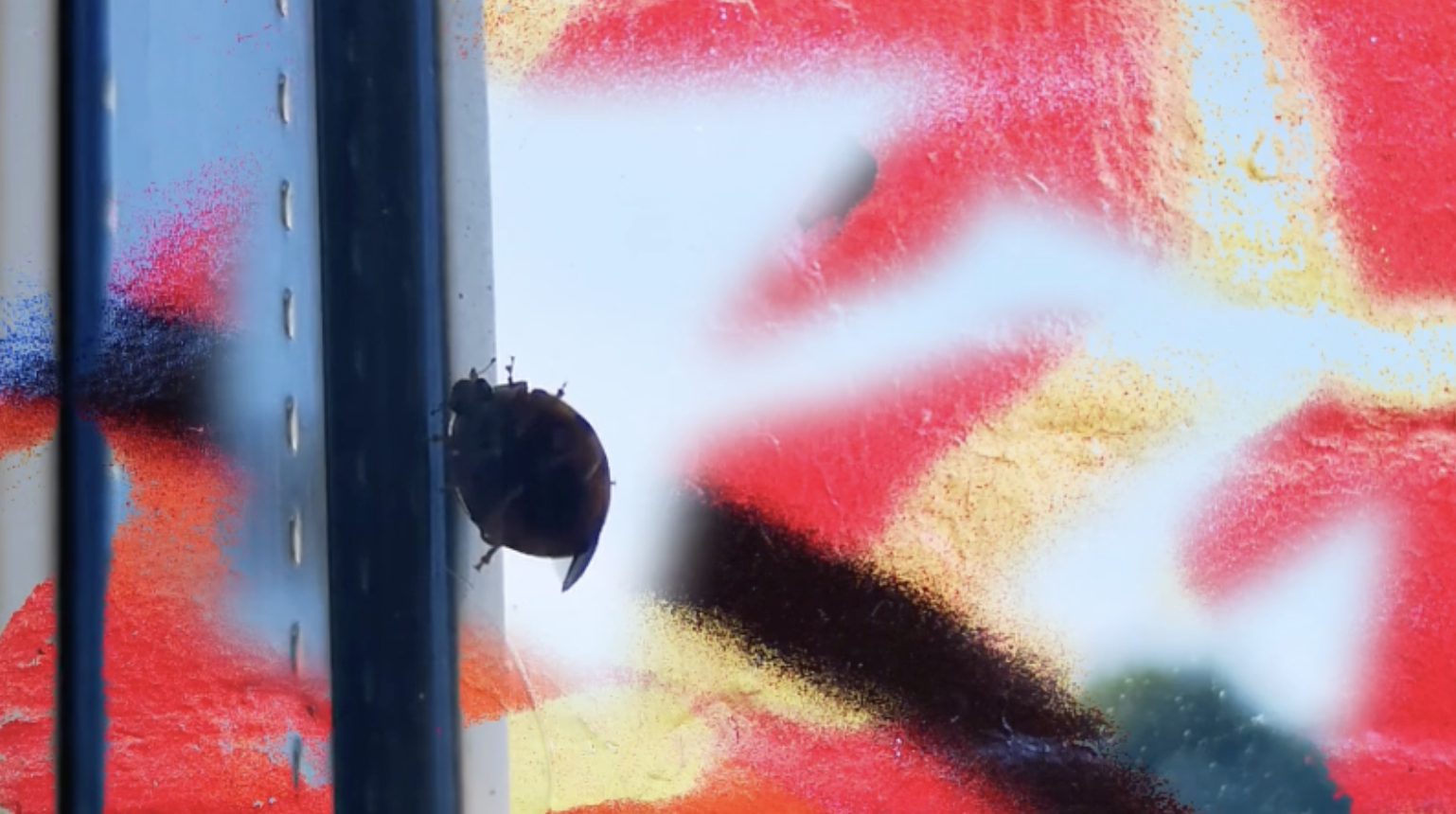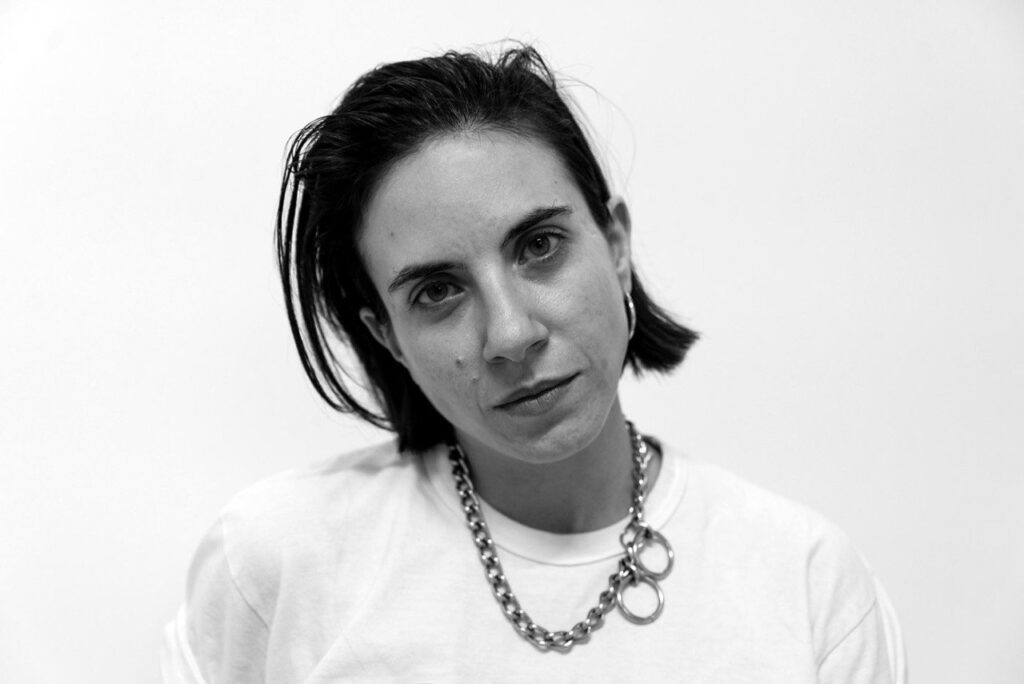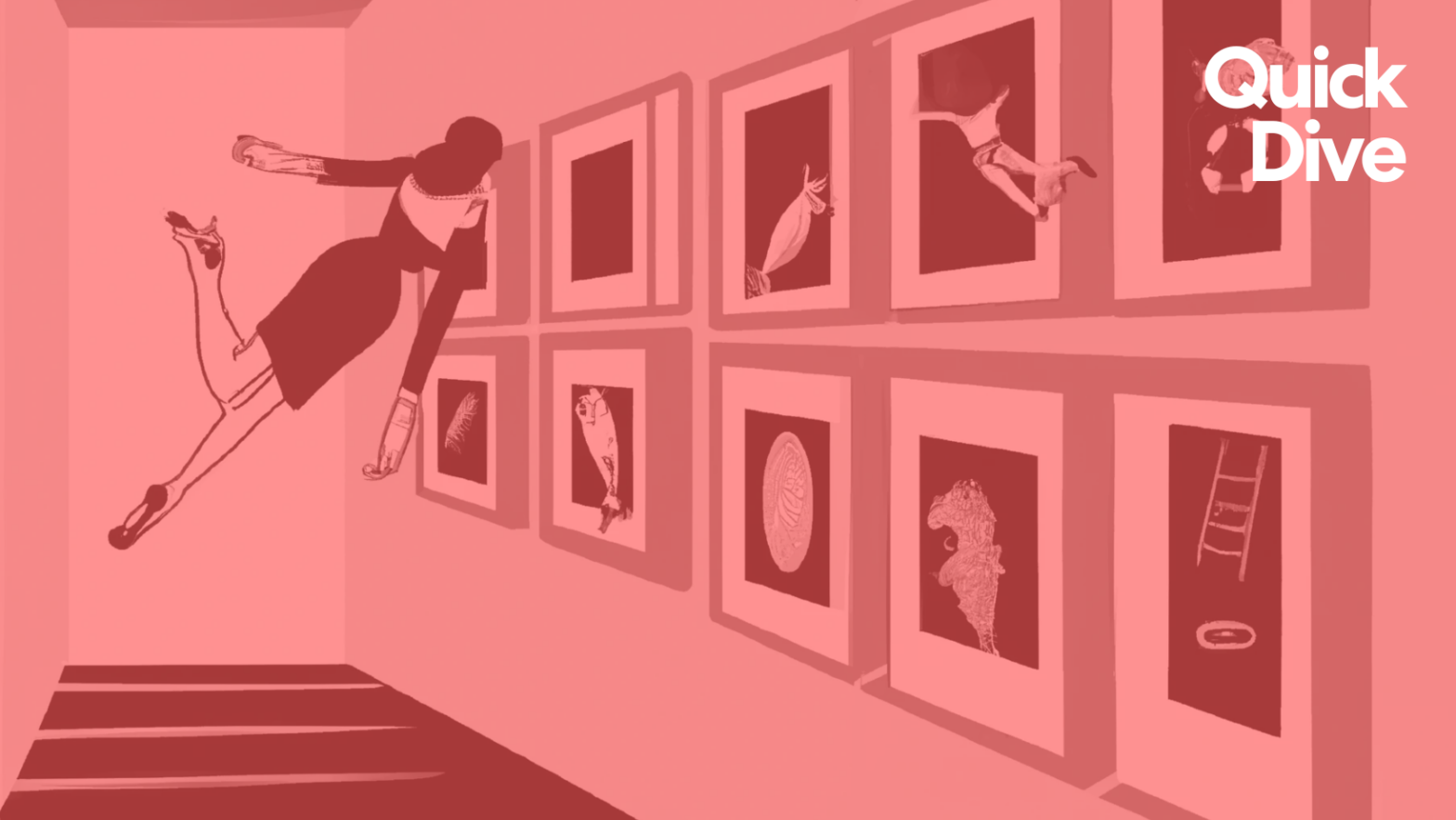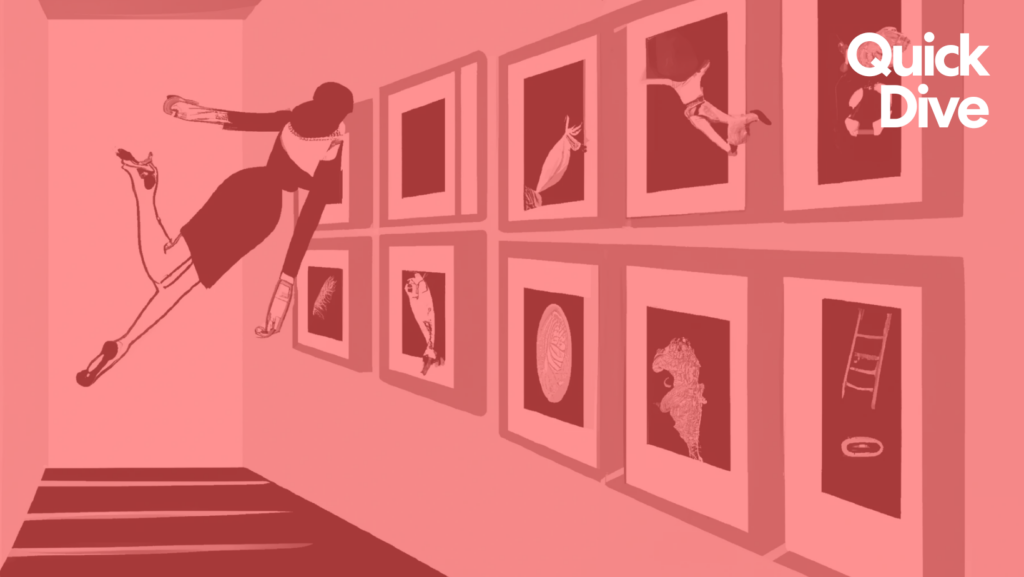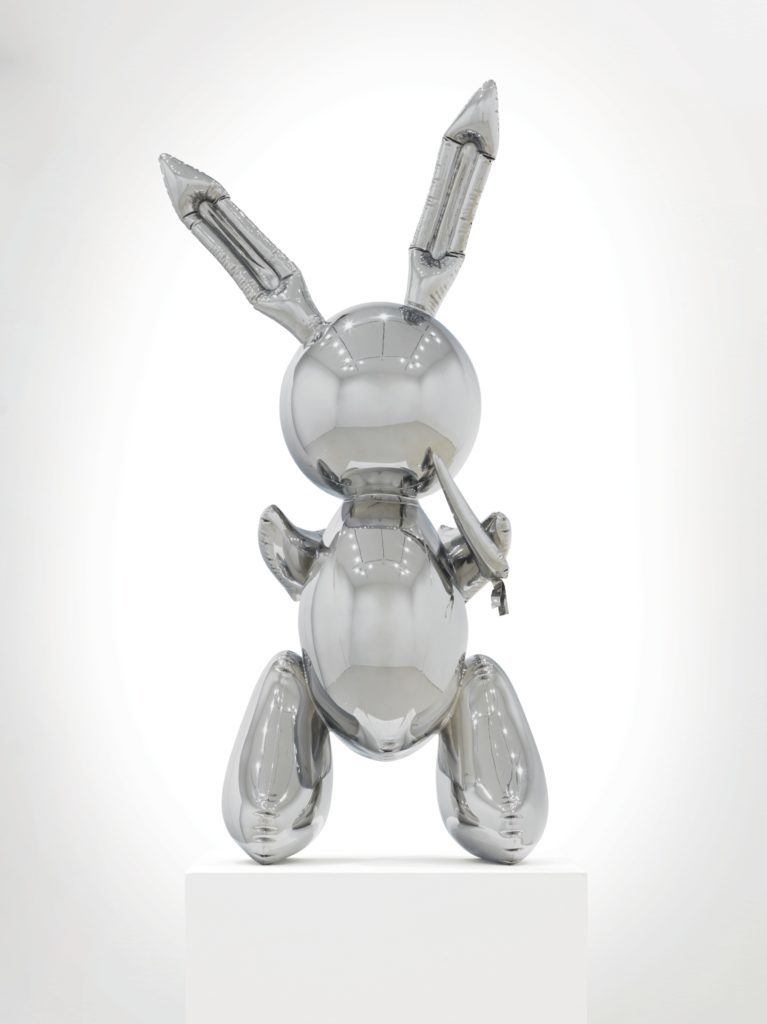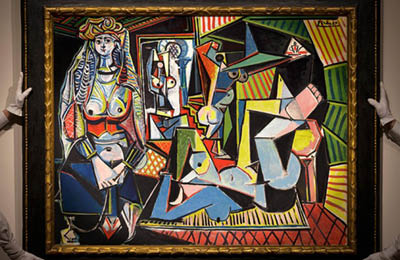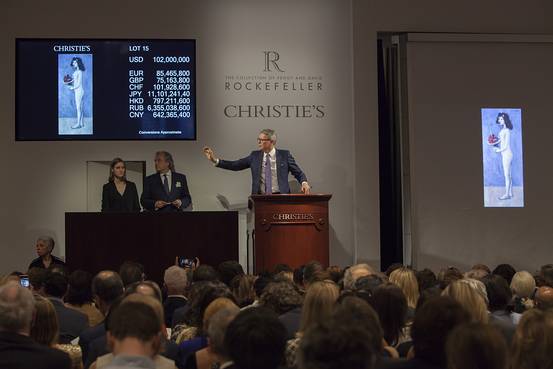Roxanne Vardi
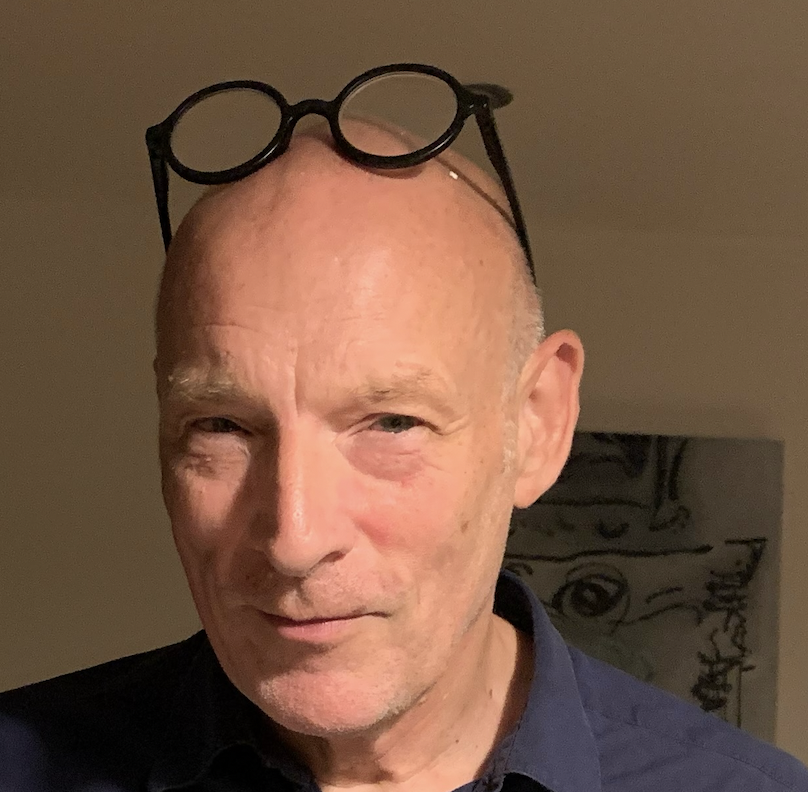
Thomas Lisle is a British artist who works in 3D animation, painting, digital art, and installations. Lisle’s works display his intention in creating new forms using digital tools, and his interest in psychology and the environment. Moreover, his artworks are part of the collections at Tate Modern in London and MoMA in New York. This interview is presented in conjunction with the launch of our latest curated solo show artcast titled Thomas Lisle: New Forms and Plasticity.
As an artist you create both paintings and digital artworks. Moreover, towards the creation of some of your digital works you also use digital paint techniques? Could you share with us your thoughts on combining more traditional historical art mediums with today’s available digital tools?
So I don’t see a combination of mediums; I see different mediums but with shared values (no mathematical values !), shared visual languages, shared symbols and psychological responses, it’s just a continuation of modern art practice in a new medium.
Let’s be clear the digital medium is very different from the real world, art critics and writers used to talk about an artist’s relationship with the media they were working in, but today very few art commentators have much knowledge of the practicality and techniques of digital art.
Artworks may be evaluated on the visual images, ideas and reactions that they invoke. We do care and think about how traditional paintings and sculptures are made. People talk about responses to mediums, and the specific use of a material in the artwork, like Eva Hesse (Hesse’s interest in latex as a medium for sculptural forms had to do with immediacy.) Wikipedia. or Richard Sierra and rusty steel. A drawing made with a pencil and a drawing done with mud or blood, for example, the medium makes a difference.
So I see the autographic, the hand-making marks by the artist as central to the paintings that I admire along with composition colour and form. What’s extraordinary about digital 3D painting is that it opens up the boundaries of what a paint stroke is capable of. If you think of ‘loading’ a brush with paint, then this paint flows out of the brush onto the paper and depending on your point of view, makes something beautiful, interesting or not. The brush is an emitter, the paint, carbon, ink, whatever flows out its just a real world liquid that can be simulated digitally. You can copy this with a digital paintbrush, but every aspect of the paint stroke can be programmed, if you use a tablet, then the pressure, direction and speed data all gets collected, and that data can be then fed in to control how thick your brush is how hairy, how anything you like, almost.
I get lots of satisfaction, both intellectually and visually, from making complex time-based abstractions from 3D paint strokes and 3D models. It relates to the need for some chaos, some randomisation in an artwork, some craziness, the hand-to-eye relationship. I use the variation in pressure, speed, and direction of a 2D brush stroke to become the starting point in a great deal of my artwork. Often the 3D brush stroke gets abstracted beyond the point of recognition as a brush stroke very quickly. This is intentional, and it’s not that I don’t like brush strokes, but that the initial motion and intent, is recorded and the data from it, is used to drive other values, such as the density of a cloud or velocity of a liquid, it’s a kind of transformation of one thing into another, a kind of ‘painting’ ‘form’ ‘psychological alchemy’ to me. A visual and coded metaphor for internal, psychological or collective change, progression, or distortion.
So while the digital paint medium is very different from the real-world medium, and one of the biggest differences is that its time based, many things are the same. I think composition, colour and form are still important; they didn’t just get cancelled. Visual languages don’t just disappear; symbols and meaning didn’t just ripped up and forgotten about. The trouble is that it’s difficult to have access to the right software – it can be expensive, it takes many years to learn and then the artist has to find a means of expression with the tools, software and hardware that are available.
I have personally been trying to make some kind of moving painting since 1982 when on my foundation, I started detuning TV sets and recording the results so that I could realise this idea of time-based art that is not photographic film/video, but rather abstract and based on visual languages.
If you have only become interested in digital art in the last few years, then it can all seem just digital at first, and how it’s made doesn’t seem so important. However, I would argue that what software is used and how well it is handled has a very drastic effect on the artistic output. As a simple example of this, just look at how many bald CGI characters there are. Any idea why? I don’t think it’s because it’s a new way of depicting humans or some ideas about bodily purity (hair being unpure, intrinsically non-body), that’s for sure. And I’m guilty of making bald figures, too. I know why I have done it; it’s because adding hair involves a whole series of technical and time-consuming issues (and not because I’m fairly bald). If I wanted to add realism, then it is going to take a few days to program and set up so that it looks and moves realistically as the character moves. On top of that, there’s a huge hit on the render time per frame from computing the motion of all the hairs and rendering 100s of thousand of individual hairs. If I buy or download some license-free, none dynamic hair, just a solid blob of matter, I might feel I have compromised. If I didn’t know a bit about human IK skeletons and character rigging (the systems that enable character animations). I wouldn’t know how to keep that hair in the same place as the head; it’s attached to as it moved. You then need to give that hair mass a hair-looking texture and have to understand how UV mapping works (UV coordinates map textures to 3D objects); it’s quite difficult to learn. If my figure is in some way distorted or abstracted, I would have to apply a similar abstraction to the hair, and this is another big issue because if my hair model isn’t made in the same way as the figure, and I didn’t make the figure, I just downloaded it or bought it for £10, then I would have to learn how to model and how to integrate even the most basic hair model into the deformation in a way that matched the figures’ abstraction also not straight forward. So bald is the easy solution, but it really makes no sense; art history is not littered with bald Mona Lisas and Madonnas, ok babies are born fairly bald, so that’s ok. The world’s artists have never gone around and depicted people who would normally have hair bald for any reason whatsoever that I know of.
There’s also a huge difference between art drawn on an iPad and made by an AI or drawn, modelled in 3D.
If you look at a digital artwork and think that someone has hand-drawn it when in fact, it’s a video effect off the shelf that took 5 minutes to achieve – it may not devalue the artwork, but it may still be fantastic in your eyes, it may be genuinely fantastic! Or you imagine an artist has cleverly programmed an Ai supercomputer to do it or built a filter from the ground up. It’s valuable to understand the artwork and the artist’s input. I’m being careful not to dismiss digital techniques that are not sophisticated or are off the shelf, the artist may be new to digital art generation the visual idea and the concept could still be fascinating, but if you don’t know the differences, then you don’t know what the artist did and you don’t understand the process or the artist’s practice.
“So I see the autographic, the hand-making marks by the artist as central to the paintings that I admire along with composition colour and form. What’s extraordinary about digital 3D painting is that it opens up the boundaries of what a paint stroke is capable of.”
Thomas Lisle, Abstract 01, 2022.
For the creation of your artworks included in your latest artcast you make use of 3D digital tools. Could you dive deeper into the complexity of these tools and how to aid contemporary artists in expressing their explorations through this new medium?
I have been trying to make time-based paintings since I was 19. Yes, there is hand drawn/painted animation, but it takes so long, it’s not procedural, and on the whole, it hasn’t been the medium of many contemporary artists, and I would say that’s because it takes a very long time, there has been no market for it, and I would say it’s difficult too, but NFT’s might change that.
The artworks in my artcast are autographic, generative and procedural (procedural-an artwork defined by a computationally represented system of rules, relationships, and behaviours, enables the creation of works that are flexible, adaptable, and capable of systematic revision. Dynamic Drawing: Broadening Practice and Participation in Procedural Art Jennifer Jacobs MIT 2017). Many artworks are going to be both Generative and procedural at the same time, and they could be 3D, 2D, AR, VR, still or moving.
In simple terms, procedural means that one programs an effect/distortion that affects a 3D model or some element in 3D or 2D and it abstracts it in a very specific way. Because it’s procedural, you can apply that effect to another different model by swapping over the input model i.e from a horse to a chicken. Procedural means all the elements that make up the abstraction effect can be tweaked, revised, animated and manipulated in more depth. I use these techniques a great deal and build on complex programming sequences that I have worked on previously, changing, modifying and improving the initial way the distortion or simulation works. Sometimes I take the whole abstraction code and make it part of a subset of another larger, more complex distortion/simulation. Once you start playing around with the fundamental building blocks, the DNA of form as it where you can start to build a new and personalised visual abstractions that are, in effect, similar to painting styles. This is particularly relevant to 3D artwork, where the scope for new forms and new and novel ways of abstraction is vastly wider than in 2D. This is because 3D encapsulates the whole object, whereas 2D only gives you the bit you can see. Leonardo only painted the front of the Mona Lisa, so if we manipulate her in 2D, we are never going to have access to the back of her, only the bit we can see in 2D.
The artworks in the artcast use lots of different techniques, from 3D painted forms to 3D painted forms turned to gases and liquids, deformed shapes, animated textures, several different types of gas simulation, directly painted tubes, particle flows, and more! It’s very much about contrasting visual elements motions and forms working in different ways to come to a sort of visual balance.
My heartfelt belief is that as cave women/men painted and people throughout history, it’s the element of the human expression that comes through using tools that they themselves wield and have a relationship with that have the meaning. The most direct way of doing that digitally is with a touch-sensitive pen or equivalent. As I mentioned earlier, an artist has to work with the tools that they have available, and I believe Blender ( a free open sources 3D package) has some 3D painting capabilities. It can make fluids, and gases, animate characters, deform models, it can do a great deal it has a modular programming functionality and a procedural node based programming language. I personally think that it’s easy to get lost in the effect and lose sight of the goal. I know that I have often spent months trying to learn a certain technique and forget why I wanted to use it in the first place. I use Maya for my artworks and have done for over 15 years.
I read an article by Alex Estorick a few years ago when he asked the question, “why are there not more painting-based 3D artworks”. Well, the answer is quite simple, it’s complicated to make a 3D paint mark that has fluid qualities and is programmable over time. The only solutions I have seen that incorporate touch sensitivity, a loaded multicoloured brush, and liquid simulations are in Houdini and Maya software packages maybe Blender. In 10 years time or so, I think people will have the computation power and disk space to do this easily. At the moment, it’s complex, and there is no off-the-shelf digital tool that does it properly. To get it to work, I have to program it procedurally, there are limits to how much detail and how long a fluid simulation will be defined by my computing power. It’s possible to make the paint stroke fundamentals in real time; the rest, the liquid simulations, take a few days to compute. I enjoy making something based on a paint stroke that then morphs into something uniquely animated and digital that no longer has any visual relationship with a brush stroke yet uses the data in the stroke to drive the animation/abstraction/deformation. And If I didn’t say anything you would probably never know.
Sometimes I have made these types of artwork and feel that the real interest lies in the struggle to work out how to do it, as the result is not as interesting as the amount of effort put in to make it. However, a few years later I find that I appreciate that learning and experimenting with a technology has led to all sorts of new and exciting work and has been invaluable after all. A splash of paint can easily become a sort of non-contemporary art thing, a more corporate communications symbol for some kind of creativity. I really want to avoid that! And find more interest in the abstraction and deformation of paint-like strokes; being able to turn off gravity reverse the surface tension of a liquid, and make paint stick to 3D characters or models opens up lots of interesting possibilities. I’m starting to treat paint simulations as an element of a larger artwork, an element that describes something but is not the centre of the artwork.
I heard Frank Stella recently describing some of his work as painting in 3D, and this is what is so interesting about 3D software, it brings together two systems that have been thought of as two distinct systems. It’s a fundamental shift in visual thinking.
“I enjoy making something based on a paint stroke that then morphs into something uniquely animated and digital that no longer has any visual relationship with a brush stroke yet uses the data in the stroke to drive the animation/abstraction/deformation.”
Thomas Lisle, In the Minds Eye, 2022.
Can you please elaborate on your interest in psychology and how this is incorporated into your artworks?
I will try and answer briefly. It seems that there are universal rules that apply to people’s psychology regardless of where they are born, which means that basically, we are all humans regardless of race and religion; religion itself seems to be oriented to where you are born and the culture you grow up in. So rather than think of specific issues to bring to the public attention in art why not look at the underlying causes of all the issues. And secondly, we are all developing psychologically; I don’t think many people can claim they have reached a full understanding of themselves or their full potential. We all have some personal issues, no one is perfect, and we all have a shadow side that we need to come to terms with. We are all moving towards individuation of one sort or another from birth, it seems to me.
As I studied psychology more and more, I started to find out about psychological symbols in art and film, and I started to investigate archetypes ( https://www.youtube.com/results?search_query=this+jungian+life+archetypes wonderful lectures of archypes) and their use in narratives and symbols, from folk tales to feature films. And symbols and psychological alchemy, the psychologist (James Hillman was written some eye-opening books on the subject.) And I started to incorporate ideas and concepts of psychology into my artwork. And Jung’s book “Man and his symbols” and introduction to Jungian psychology and symbols.
Thomas Lisle, Abstract 02, 2022.
Some of your artworks such as Abstract 01 and Abstract 02 may remind some of artworks by artist Wassily Kandinsky. Is there a purposeful reference to art history in your works?
Not specifically, but I love his work and subconsciously, its working away somewhere in the background. There are lots of references to the art history of the last 100 years, in my work.
Are there any other traditional artists or art periods that you look back at or are inspired by in the creation of your works?
In the 20th century, artists like Picasso and Rauchenberg, the Fauves and German expressionists have been lifelong influences. Helen Chadwick, Ron Haseldon, Marc Chaimowicz all had an influence on me when I was at Art school. Today some of the artists I find the most interesting are Albert Oehlens and Gerhard Richter. It’s the visual experience and ideas that make their work so interesting and important and an important influence on my work.
Thomas Lisle, Subconscious Motions, 2022.
As a young artist you became interested in Glitch Art and Punk Rock, could you outline how these art forms influenced your art practice and oeuvre of works in general?
I think there is an element of punk rock in lots of art movements, from the Fauves to Dada to Expressionism, at the time of punk rock, it only really lasted a few years; there was no equivalent visual movement, I was only 16 in 1978, it seemed an important movement to be part of and it was very cathartic.
My glitch art was borne out of a desire to make art that was more about our time (then) and the media of the time, analog TV, to basically make images that had a new approach to abstraction by detuning TVs by making them go wrong and using ones that didn’t really work, capturing a bit of the randomness at specific moments. For those of you who never experienced analogy TV it was the high tech of the 70’s 80’and 90’s that really wasn’t very perfect and all controlled by the Broadcasters. Around that time in the early 1980s, I started to be interested in Electronic music – I can’t play an instrument or even hum in tune, but there was no equivalent to the synthesiser for artists in the 80s. Today I still like electronic music. I listen to a wide variety from classic to world, to electronic. The fascinating popular music for me today is the french “Trip Hop” scene, I can see elements of that kind of clash of taking all sorts of reference points and techniques and putting them together in a chaotic way that somehow finds some kind of balance or sense interesting in a number of ways with my digital art.
So going back to your question, I think the legacy of punk rock was to be happy to take risks and not worry about the results. My work with glitch art was aimed at finding new ways to abstract figures in a mode that was analogous to the times I lived in and to take on board the idea of time-based painting. I gave up making glitch TV artworks by the early 1990’s as I got frustrated with the inflexibility of the medium; there’s very little control. It seems less about conscious abstraction, especially of the figure, than about a symbol for the frailty of the digital era. Analog glitch art threw up interesting abstractions, very randomly. Digital glitch art is programmed. Digital 3D systems give me control of nearly every aspect of the artwork I make, it’s all a conscious decision it’s all intended, even the added visual chaos is orchestrated.

